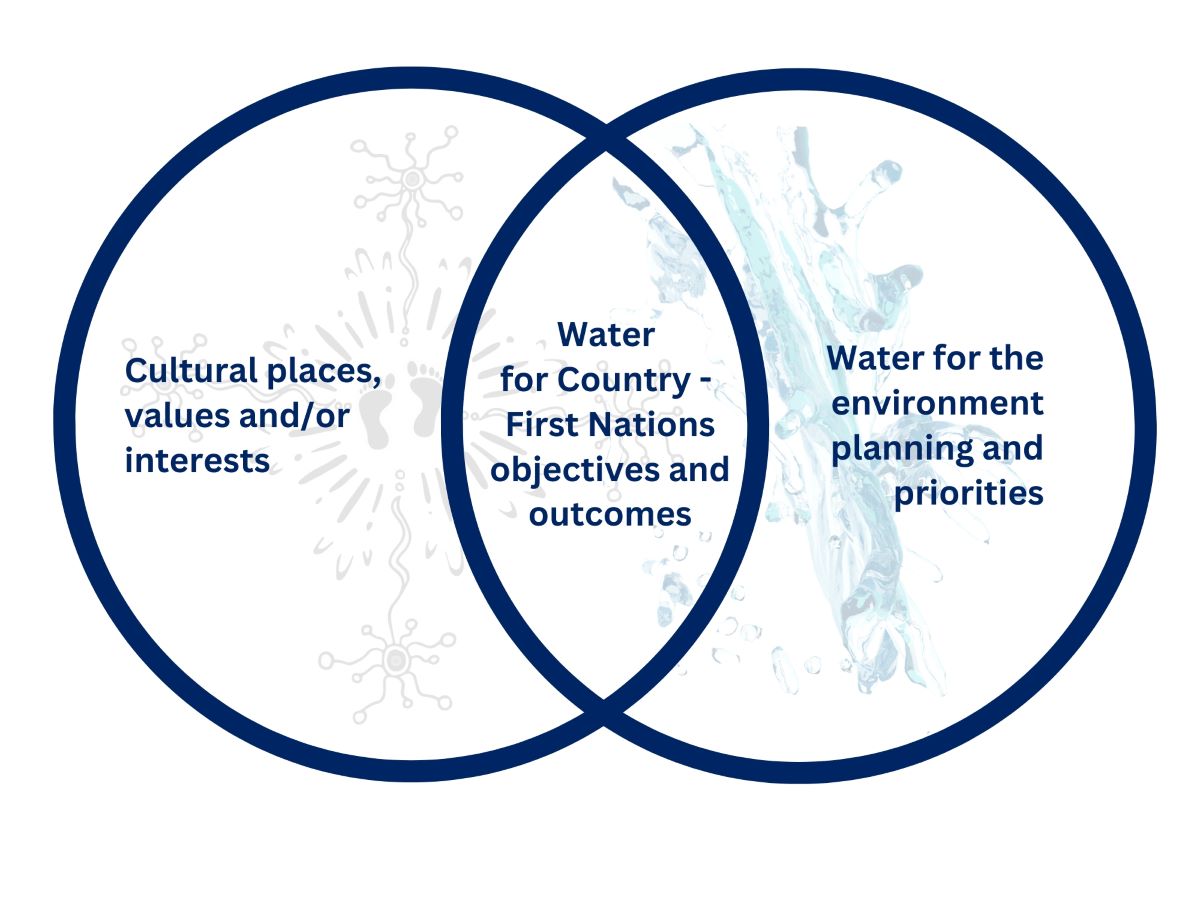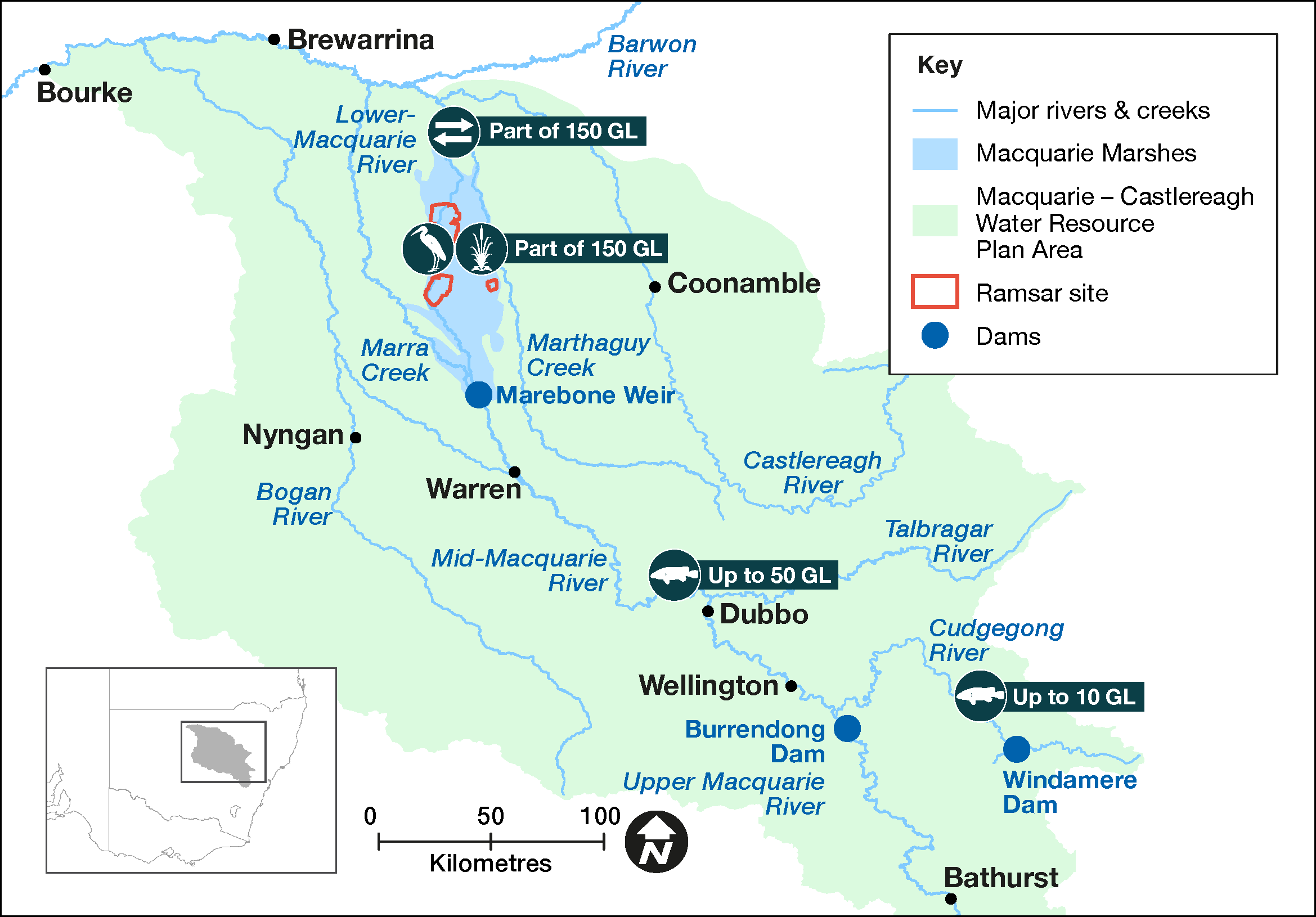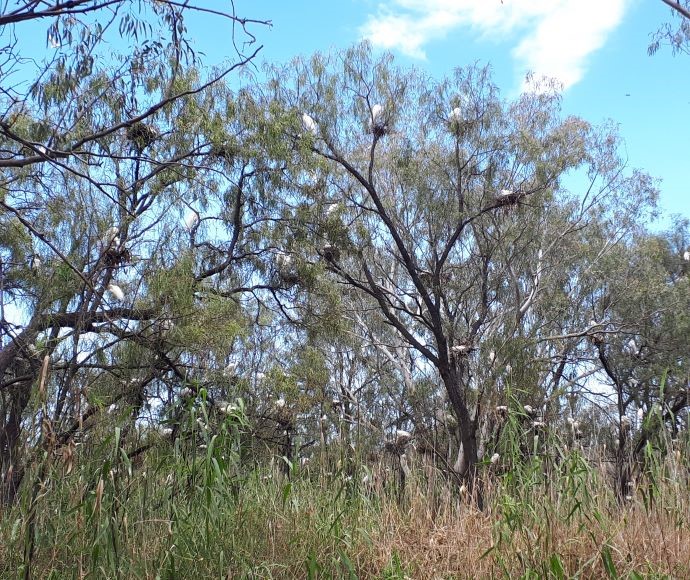Water that is allocated and managed specifically to improve the health of rivers, wetlands and floodplains is known as water for the environment.
NSW environmental water management teams work with local community advisory groups including landholders, Aboriginal stakeholders, partner agencies and other interested community members to develop detailed annual plans for the use of water for the environment in each catchment, including how its use is prioritised.
The catchment
The Macquarie–Castlereagh catchment covers more than 75,000 square kilometres in the state’s central west. It extends from the Blue Mountains to the Barwon River plains, with major tributaries including the Cudgegong, Talbragar and Bell rivers.
The catchment is home to the iconic Macquarie Marshes – one of the largest semi-permanent wetland systems and colonial waterbird breeding sites in inland Australia.
The catchment supports important cultural values for the Wiradjuri, Ngiyampaa, Wailwan and Kamilaroi Aboriginal people.
Water for rivers and wetlands
Following wet years in 2021 and 2022, the weather outlook for 2023 is dry and warm, signalling a possible return to dry conditions.
Based on projected dam conditions and current balances, environmental water accounts can expect an allocation of approximately 45% on 1 July 2023. This will mean projected balances:
- of approximately 278 gigalitres (GL) of carryover in the regulated Macquarie River and a further 150 GL of general security allocations, plus supplementary and unregulated licence balances
- of approximately 24GL of planned environmental water allowance in the regulated Cudgegong River, including residual water and new allocations.
The Environmental Water Advisory Group (EWAG) for the regulated catchment has prepared a multi-year rolling strategy to inform annual planning. For the 2023–24 water year, water managers plan to target outcomes for:
- native fish, wetland vegetation, waterbirds in the Macquarie regulated reach, and the targeted unregulated reaches downstream, and flow connection to the Barwon River
- native fish and river processes, including targeting flow variability in the Cudgegong regulated reach.
We plan to support river and wetland resilience over the next 2 to 3 years by holding a portion of water aside in general security carryover accounts for future use.
Aboriginal water management priorities
Water for Country is environmental water use planned by the Department of Climate Change, Energy, the Environment and Water and Aboriginal people to achieve shared benefits for the environment and cultural places, values and/or interests.
In 2023, we supported Tubba-Gah Maing Wiradjuri to complete an Aboriginal Waterways Assessment (AWA). AWA’s assist Aboriginal peoples to collate traditional knowledge about their significant waterways, and environmental and cultural values. The AWA process involves Aboriginal people going out on Country for several days and assessing chosen sites based on cultural significance and environmental health.

Environmental water managers have been working to support Aboriginal people’s priorities in water management.
The Wayilwaan people in the regulated part of the catchment currently has a representative on the Macquarie Cudgegong Environmental Water Advisory Group (EWAG).
In 2023-24, we hope to:
- add further representatives to the EWAG from the Wiradjuri and Wayilwaan people with an interest in the regulated Macquarie and Cudgegong rivers
- continue to build local and regional relationships with Aboriginal people
- support Aboriginal representatives to include their priorities in EWAG discussions
- partner with Aboriginal people to examine watering viability for selected assets, including areas near Trangie and Warren.
Weather and water forecast
As at early June the El Niño–Southern Oscillation (ENSO1) outlook is neutral, with a potential return to El Nino neutral during winter, meaning dry and relatively warm conditions are likely over autumn and winter 2023. It is possible this weather is an indication of a return to dry conditions.
Water managers have prepared watering plans that consider a range of weather and water availability scenarios. This is known as resource availability scenario planning. As of May 2023, conditions in the Macquarie– Castlereagh catchment are ‘wet’.
1. ENSO: The interaction between the sea surface and atmosphere over the Pacific Ocean which results in dryer (El Nino) or wetter (La Nina) conditions.
Resource availability scenario
Current forecast: Wet
| Conditions | Main aim | Other aims |
|---|---|---|
| Very dry | Protect | Avoid critical loss Maintain key refuges Avoid catastrophic events |
| Dry | Maintain | Maintain river functioning Maintain key functions of high priority wetlands |
| Moderate | Recover | Improve ecological health and resilience Improve opportunities for plants and animals to breed, move and thrive |
| Wet to very wet | Enhance | Restore key floodplain and wetland linkages Enhance opportunities for plants and animals to breed, move and thrive |
Key planned actions for 2023–24
Native fish
Water managers will target native fish populations in the mid-Macquarie Wambuul River and regulated Cudgegong River.
The fish species targeted will depend upon weather conditions over spring. If river flows can be kept relatively stable, water managers will target flow generalists, like Murray cod and eel-tailed catfish, which benefit from steady flows. If more variable flows arise, water managers will consider actions for flow specialists, including golden perch.
Vegetation
At a minimum, water managers will deliver an environmental flow pulse in Spring 2023 to target the semi-permanent wetland and river red gum woodlands of the Macquarie Marshes, up to an area of approximately 40,000 hectares. This will support wetland vegetation to grow, flower and set seed.
As a further benefit, riparian vegetation along the mid and lower Macquarie Wambuul River and the regulated Cudgegong River is supported by regulated river operation. These flows help to recharge shallow groundwater systems and support dependent vegetation.
Connectivity
Connectivity of the Macquarie-Cudgegong catchment to the Barwon River has been consistent through 2021, 2022 and early 2023. With a relatively wet Macquarie Marshes, it is expected spring flows in 2023 will provide an ecologically valuable flow connection along the lower Macquarie River to the Barwon River. This will allow native fish to move between catchments and will also support some low or base flow in the unregulated Barwon River to Brewarrina.
Map of proposed annual priority targets in the water resource plan area 2023–24

Map of proposed annual priority targets in the Macquarie–Castlereagh Water Resource Plan area 2023–24
The department is supporting the health and resilience of rivers and wetlands by delivering water for the environment where and when it is needed. We use the best available science, management expertise and experience to manage water across the landscape. This statement of annual priorities identifies the waterways and wetlands that are likely to receive water.
Our decision-making process considers:
- expected availability of water in the coming year
- conditions of the previous year
- current health of the plants and animals in these ecosystems.
About water for the environment
Water for the environment delivers benefits for communities, rivers, wetlands and wildlife across New South Wales.
Healthy, connected rivers and floodplains are a focus for tourism, fishing, recreation and relaxation. Rivers carry water to our homes, schools, farms and businesses, and along the way, support countless species including native fish, waterbirds, frogs, plants and more.
Rivers and wetlands have great cultural and spiritual significance for Aboriginal people.
Water for the environment is a critical tool to maintain and enhance the rivers, wetlands and wildlife we all love.
Working with communities
Local communities are at the heart of everything we do.
We involve the broader community by holding site tours and forums, and online and in-person events.
NSW water management teams consult regularly with community-based environmental water advisory groups.
Environmental water advisory groups members include local landholders, recreational fishers, Aboriginal People and local government representatives. Their advice helps to inform the decisions made by our local environmental water management teams.
Expected environmental water volumes available at 1 July 2023
The Department of Climate Change, Energy, the Environment and Water works with partner agencies to manage environmental water in the catchment.
Planned environmental water
| Source | Maximum volume available (gigalitres) | Volume expected 1 July under current conditions (gigalitres)* |
|---|---|---|
| Macquarie River Environmental Water Allowance | 320 | 192 |
| Cudgegong River Environmental Water Allowance | 22.8 | 24 including residual water |
Water licenced to New South Wales
| Source | Maximum volume available (gigalitres) | Volume expected 1 July under current conditions (gigalitres)* |
|---|---|---|
| General security | 96.8 | 67.8 |
| Supplementary | 1.4 | 1.4 |
| Unregulated | 5.4 | 5.4 |
Water licenced to the Commonwealth
| Source | Maximum volume available (gigalitres) | Volume expected 1 July under current conditions (gigalitres)* |
|---|---|---|
| General security | 252.4 | 168.8 |
| Supplementary | 8.3 | 8.3 |
* This is a combination of current allocations and future forecast allocations.
Notes: This is an indicative summary of expected volumes to be available. For further detail and information on available volumes you can contact the region via the Department of Climate Change, Energy, the Environment and Water on 1300 361 967.
1 gigalitre = 1000 megalitres; 2.5 megalitre = 1 Olympic swimming pool.
Outcomes of water for the environment
Water for the environment has been delivering outcomes for rivers, wetlands and wildlife for 30 years.
We deliver flows that:
- trigger native fish to breed and move
- support waterbirds to nest and feed
- connect rivers and floodplains
- water forests and floodplains
- allow plants to grow, flower and set seed
- create refuge during droughts
- enhance outcomes during wetter times
- release vital nutrients from the floodplain floor that underpin the aquatic food web.
It’s habitat restoration on a landscape scale.

The Macquarie valley covers more than 75,000 square kilometres in the state’s north.
More about ...
- Long-term water plans
- Macquarie-Castlereagh Long-Term Water Plan
- Water Sharing Plan for the Macquarie and Cudgegong Regulated River Water Sourceopens a new window
- Murray Darling Basin Authorityopens a new window
- Murray Darling Basin Plan
- Commonwealth Environmental Water Office – Macquarieopens a new window
More information on planned and past watering events
- Annual environmental water priorities in the Macquarie-Castlereagh catchment 2022–23
- Macquarie–Castlereagh Catchment – Water for the Environment: Annual Priorities 2021–22
- Macquarie-Castlereagh catchment: Annual environmental watering priorities 2020–21
- Macquarie Castlereagh: Annual environmental watering priorities 2019–20
- Macquarie-Castlereagh catchment: Annual Environmental Watering Priorities 2018–19
- Macquarie-Castlereagh: Annual environmental watering priorities 2017–18
- Macquarie-Castlereagh Water Resource Plan Area: Statement of annual environmental watering priorities 2016–17
- Macquarie-Castlereagh Water Resource Plan Area: Statement of annual environmental watering priorities 2015–16
- Macquarie Marshes Adaptive Environmental Management Plan
- Water for environment outcomes 2022–23
- Water for environment outcomes 2021–22
- Use of water for the environment in NSW: Outcomes 2020–21
- Use of water for the environment in NSW: Outcomes 2019–20
- Use of water for the environment in NSW: Outcomes 2018–19
- Use of water for the environment in NSW: Outcomes 2017–18